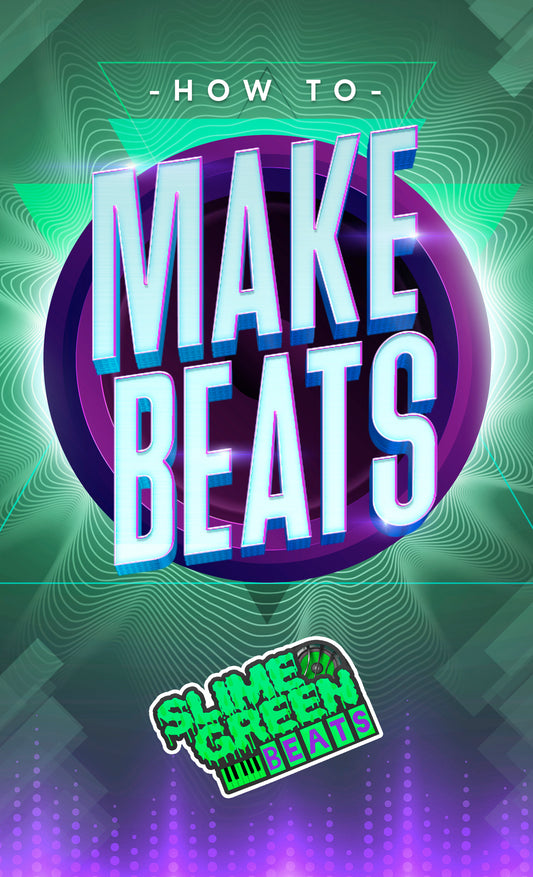Starting a podcast can feel like you're about to climb a mountain, but don't worry, it's not that scary. It's all about finding your voice, setting up a good recording space, and learning a few editing tricks. Whether you're chatting with friends or diving into deep topics, the key is to keep things interesting and clear for your listeners. Let's break down how to create a podcast with some simple tips on recording and editing.
Key Takeaways
- Find your unique voice and style to keep listeners engaged.
- Create a quiet and comfortable recording space.
- Use editing tools to cut out unnecessary noise and filler words.
- Balance your background music with your voice for a pleasant listening experience.
- Promote your podcast through social media and collaborations.
Finding Your Podcasting Voice: Unleash the Inner Radio Star

Channeling Your Inner DJ: Tips for a Smooth Delivery
So, you want to be the next podcast sensation? Well, grab your mic and let's get started. First things first, channel your inner DJ. Imagine you're spinning records at the coolest radio station in town. Confidence is key—even if you're just sitting in your living room wearing pajamas. Speak clearly, but don't overthink it. A little personality goes a long way. Try smiling while you talk; it actually changes your tone. And remember, enthusiasm is contagious!
Avoiding the Dreaded Monotone: Keep Listeners Awake
No one wants to listen to a podcast that sounds like a robot reading a textbook. To avoid this, vary your pitch and speed. Think of yourself as a rollercoaster—take your listeners on a ride. Use your voice to emphasize important points and keep things interesting. If you're feeling brave, throw in a joke or a funny story. Just make sure it's relevant, or you might end up with a few awkward silences.
The Art of Storytelling: Making Your Podcast a Must-Listen
Everyone loves a good story, and your podcast is the perfect place to tell one. Whether you're sharing personal experiences or discussing the latest trending topic, make sure to keep your audience hooked. Start with a strong opening to grab their attention. Use descriptive language to paint a picture, and don't be afraid to get a little dramatic. And remember, not every story needs a happy ending, but it should always leave your listeners wanting more.
"A great podcast is like a rollercoaster—full of twists, turns, and a few unexpected drops. Keep your listeners on the edge of their seats, and they'll keep coming back for more."
For those looking to dive deeper into the world of podcasting, consider exploring resources like this comprehensive beginner's guide to music production, which can provide insights into setting up your home studio and selecting the right equipment.
Setting the Stage: Creating the Perfect Recording Environment
The Blanket Fort Studio: DIY Soundproofing Hacks
Who says you need a fancy studio to get started? Grab all the blankets and pillows you can find, and transform your space into a cozy recording haven. Blankets are your best friends when it comes to absorbing sound and reducing echo. Drape them over furniture, hang them on walls, or even build a little fort around your recording area. It's like being a kid again, but with more microphones and less juice boxes.
Microphone Magic: Choosing the Right Gear for Your Voice
Picking the right microphone is like choosing the perfect partner — it needs to complement your voice and style. Consider what you need: a dynamic mic for the strong, punchy tones or a condenser mic for the softer, detailed sounds. Don't forget to explore the gain staging process to ensure your audio levels are balanced. Remember, the mic doesn't make the podcaster, but it sure can help!
Silencing the Symphony of Background Noises
Ah, the sweet sound of silence — or at least the attempt to achieve it. Whether it's the neighbor's dog barking or the fridge humming, background noise is the enemy. Here are some tricks to keep those pesky sounds at bay:
- Record during quieter times of the day, like when everyone else is at work or asleep.
- Use heavy curtains or rugs to dampen outside sounds.
- Consider investing in a white noise machine to mask unwanted noises.
"The best recordings happen when you least expect it — like when the world decides to take a nap."
With these tips, you'll be well on your way to creating a recording space that's as quiet as a library on a Tuesday afternoon. Happy podcasting!
Editing Like a Ninja: Tricks to Make Your Podcast Shine
Cutting the Umms and Ahhs: Filler Words Be Gone
So, you've recorded your podcast and now you're staring at the audio file like it's a giant spaghetti mess. Don't panic! Chopping out those pesky filler words like "um," "uh," and "you know" can make your podcast sound way more professional. It's like magic. Use editing software to find and cut these distractions. But hey, don't go overboard. A few "umms" here and there can keep things natural.
The Power of Silence: Using Pauses for Dramatic Effect
Silence isn't just golden; it's a secret weapon. A well-placed pause can add drama, make your point stick, or give your listeners a moment to digest what you've said. Think of it like seasoning a dish – too much can ruin it, but just the right amount can make it delicious. Use pauses wisely, and your podcast will have that extra punch.
Sound Effects 101: When to Add a Little Extra Spice
Adding sound effects is like putting sprinkles on a cupcake. It can make your podcast fun and engaging. But remember, less is more. You don't want your podcast to sound like a chaotic soundboard from a 90s radio show. Choose effects that enhance your story, not distract from it. Whether it's a swoosh, a ding, or a subtle background hum, make sure it fits the vibe. And for those looking to step up their game, check out resources like "How to Mix Beats" for some pro tips on mixing sound.
Music to Their Ears: Crafting the Perfect Soundtrack

Finding Royalty-Free Gems: Music Libraries to Explore
Alright, so you've got your podcast idea all set, but now you're thinking, "Hey, this could really use some killer tunes." Fear not, my friend! The world of royalty-free music is your oyster. Dive into libraries like Free Music Archive, Incompetech, or even dig into the "Wonderland" melody loops pack for some truly magical sounds. These resources are packed with tracks that won't cost you a dime, and they're just waiting to make your podcast pop.
Setting the Mood: Matching Music to Your Podcast's Vibe
Choosing the right music is like picking the perfect outfit for a first date. You want it to say something about you without stealing the spotlight. If your podcast is all about mellow chat, go for something chill and laid-back. Running a true-crime series? Maybe some suspenseful tunes will do the trick. Remember, the music should enhance, not overshadow, your content.
Avoiding Audio Overload: Balancing Music and Dialogue
Let's be real, nobody wants to strain their ears trying to hear your voice over blasting beats. Keep the music at a lower volume than your dialogue. Think of it like seasoning a dish: a little goes a long way. When in doubt, err on the side of subtlety. Balance is key to making sure your listeners stick around for the whole episode.
Music in a podcast is like the salt in your grandma's stew—just enough to bring out the flavors without overpowering the main ingredients. Add thoughtfully and stir well!
The Final Touch: Mastering Your Podcast for the Masses
Volume Levels: Keeping Your Listeners' Ears Happy
Alright, folks, let's talk volume. You don't want your podcast to sound like a whisper one minute and a rock concert the next. Consistency is key. Use your editing software to ensure your audio levels are balanced. A good rule of thumb is to keep your peaks around -6 dB and your average levels between -12 and -16 dB. This way, no one's reaching for the volume knob every five seconds.
The EQ Equation: Fine-Tuning Frequencies Like a Pro
Think of EQ as your podcast's personal stylist. It can help you cut out those pesky low-end rumbles and bring your voice into focus. Start by cutting frequencies below 80 Hz to eliminate unnecessary noise. Then, gently boost the mids around 1-3 kHz to make your voice pop. But remember, subtlety is your friend here. You’re not remixing a techno track.
The Art of the Fade: Smooth Transitions and Endings
Nothing screams amateur like abrupt cuts. Fades are your best friend for creating smooth transitions between segments. When ending your podcast, a gentle fade-out can leave your listeners with a sense of closure. Just imagine, as your outro music softly fades, your listeners are already eagerly anticipating the next episode.
Mastering is like the cherry on top of your podcasting sundae. It’s the final polish that makes everything sound cohesive and professional. Don’t skip this step if you want your podcast to stand out in the crowded audio landscape.
For those eager to dive deeper into editing, check out our essential podcast editing tips to ensure your episodes are polished and ready for the world.
Promoting Your Podcast: Getting Heard in the Digital Jungle
Social Media Savvy: Building a Buzz Before Launch
Alright, so you've got your podcast all set up and ready to go. But guess what? If you build it, they won't just come. You've got to shout from the digital rooftops! Start by picking your social media battlegrounds wisely. Whether it's Instagram, Twitter, or TikTok, find where your potential listeners hang out. Craft engaging posts, use hashtags like they're going out of style, and don't forget to post regularly. Think of it as feeding a very hungry social media beast.
Collaborations and Guest Spots: Expanding Your Reach
Why not invite a friend to the podcast party? Collaborating with other podcasters or having guest appearances can do wonders for your listener count. It's like a podcast swap meet! You bring your audience, they bring theirs, and together you create something magical. Plus, it's way more fun than talking to yourself all the time. Don't forget to ask your guests to promote their episode on their channels too—it's a win-win!
The Power of Reviews: Encouraging Listener Feedback
Here's the thing: reviews are like gold in the podcasting world. They boost your credibility and help you climb those all-important podcast charts. Encourage your listeners to leave reviews by making it easy and fun. Maybe offer a shout-out in your next episode for the best review. And hey, don't be shy to ask for feedback. It might sting a little, but it's the best way to improve and give your audience what they really want. Remember, constructive criticism is your friend.
"Promoting your podcast is like trying to get noticed at a crowded party. You need to be loud, proud, and maybe wear something sparkly."
Podcasting Pitfalls: What Not to Do When Creating Your Show
Avoiding the Over-Edit: Keeping It Real and Relatable
Let's face it, nobody likes a podcast that sounds like it was put through a blender. Over-editing can make your show lose its natural charm. Sure, you want to cut out the awkward pauses and the "umms," but don't go overboard. Keep it real! Your listeners want to feel like they're in the room with you, not listening to a robot.
The Curse of Consistency: Why a Schedule Matters
Ah, consistency—the bane of every podcaster's existence. It's tempting to release episodes whenever you feel like it, but your audience might not be so forgiving. A regular schedule helps listeners know when to expect new content, keeping them engaged and coming back for more. Plus, it stops you from becoming that friend who only calls when they need something.
Ignoring Feedback: Listening to Your Audience's Needs
Your listeners are your best critics. Ignoring their feedback is like throwing away a treasure map. They can tell you what they love and what they don't. So, ask for their opinions and actually listen! Whether it's through reviews, social media, or direct messages, their insights can help shape your podcast into something even better. Remember, a happy listener is a loyal listener.
When starting your podcast, it's easy to make mistakes that can hurt your show. Avoid common traps like not planning your episodes or ignoring your audience's feedback. Remember, a successful podcast needs good content and a clear direction. For more tips and resources to help you create a great show, visit our website!
Wrapping It Up: Your Podcast Adventure Awaits!
So there you have it, folks! You've got the lowdown on how to kickstart your podcast journey and edit like a pro. Remember, it's all about finding your voice and having a blast while doing it. Sure, you might stumble over a few 'ums' and 'ahs,' and maybe your cat will make a surprise guest appearance in the background, but that's all part of the charm. Embrace the chaos, laugh at the bloopers, and keep tweaking until your podcast shines brighter than your grandma's silverware. Now, go out there and make some noise—literally! Your audience is waiting, and who knows? You might just become the next big thing in podcasting. Happy recording!
Frequently Asked Questions
How do I make my podcast sound interesting?
To make your podcast sound interesting, try to speak naturally and with enthusiasm. Avoid speaking in a monotone and engage your audience with lively storytelling. Practice your delivery to ensure a smooth and engaging flow.
What can I do to reduce background noise when recording?
You can reduce background noise by recording in a quiet place, using blankets or foam to dampen sound, and choosing a good quality microphone. Editing software also offers tools to filter out unwanted noise.
How do I choose the right music for my podcast?
Select music that matches the mood and theme of your podcast. Explore royalty-free music libraries to find tracks that fit well with your content without overpowering the dialogue.
Why is editing important for a podcast?
Editing is crucial because it helps remove mistakes, filler words, and awkward pauses, making your podcast sound professional and polished. A well-edited podcast keeps listeners engaged and enhances the overall quality.
How often should I release new episodes?
Consistency is key, so try to release new episodes on a regular schedule, whether it's weekly, bi-weekly, or monthly. This helps build an audience who knows when to expect new content.
Can I record a podcast with just my phone?
Yes, you can start recording a podcast with just your phone, but for better sound quality, consider investing in a good microphone and using editing software to enhance the audio.








